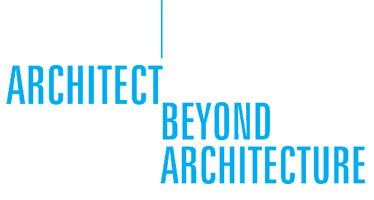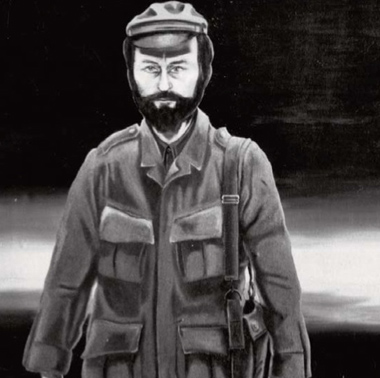
 |
|
|---|---|
He was born on 12th December 1938 in Czerkasy in Volhynia. He
obtained his A levels at the Lyceum in Kluczbork. He studied architecture
at the Krakow University of Technology and painting in the
atelier of professor Krcha at the Academy of Fine Arts in the years
1957–65. Since 1966 he has pursued painting, graphic art, drawing and stage design. He took part in 10 international exhibitions including the 6th International Biennial Graphic Arts Exhibition Kraków, the 3rd and 4th International Biennial Exhibition of Painting in Kosice (Czechoslovakia), the 8th, 9th, 10th International Poster Biennale Warszawa; the 4th International Poster Biennale Lahti (Finland), the 4th International Poster Triennale Mons (Belgium), the 8th International Poster Triennale Toyama (Japan). His works were presented during 27 individual exhibitions in Poland and abroad including: Kraków (1968, 1969, 1970, 1974, 1975, 1978, 1989, 2000, 2004, 2006, 2009; Wrocław, Gdańsk; Białystok; Nowy Sącz; Piotrków Trybunalski; Kluczbork 1996, 2005, 2007; Tychy; Mikołów; Gorlice; Sandomierz; Darmstadt; Dusseldorf Jugenheim (West Germany). He participated in several dozen group exhibitions abroad including: Germany (many times), Italy, Switzerland, the USA, France (many times), USRR, Holland, Bulgaria, Czechoslovakia, Republic of Cuba, Mexico, Croatia. He took part in over 150 local and community events/exhibitions including: the 5th Spotkania Krakowskie / Krakow Events, the 8th Festival Złote grono / The Golden Grape Zielona Góra, the 7th Warsaw Art Festival, the 5th-8th Polish Poster Biennale Katowice, Pokolenia i Tendencje / Generations and Trends Krakow, Rysunek i Obraz / Drawing and Painting Krakow, the 9th National Graphic Arts Exhibition Warszawa, Sztuka Faktu / Factual Art Bydgoszcz, Akcja Plastyczna / Art Performance Wernisaż u Szadkowskiego, Krakow. He has collaborated with publishing houses and editorial staff of the PWN (Polish Scientific Publishers) WAG-KAW, PWM (Polish Music Publishers) , Economic University in Krakow Publishing House, “Homini” Bydgoszcz, as well as “Student” and “Aura” in Krakow. Artistic collaboration with theatres in Poland and abroad including: Teatr 38, Akne Theatre, “Meeting Ground Theatre“ in Nottingham, J. Słowacki Theatre and Opera House in Kraków, “Banialuka” Theatre in Bielsko-Biała, Teatr Lalki i Aktora Opole. Sławomir Lewczuk recived 25 awards and prizes in the competitions and artistic events. His works are to be found in museum and private collections in Poland and abroad. Learning to fly A nameless man in the street, deprived of privacy, with nondescript personality, surrounded by a crowd that is aggressive or tired of life – such is the scenery of paintings by Sławomir Lewczuk. His protagonists are wearing masks, looking for their place in a society, waiting idly for an impulse to help them rise above mediocrity. But these are only illusions, symbolic gestures showing weakness, helplessness and what is most important, inability to fight the cruelty of the world. Lewczuk has always treated his painting as a way to change the reality. His approach would be either journalistic or symbolic but almost always he told stories. His paintings arranged in cycles, often repeating a motive and using the same technique, are transformed into a literary narration of unique rhythm with aggressively introduced subject. How much one is reminded of Andrzej Wróblewski's works from his best period! How many similarities one can find here as well as completely unexpected polemics with the author of “Szofer niebieski / Blue chauffeur” or “Rostrzelanie surrealistyczne / Surrealistic execution”. There are similarities in the colouring (blue, violet, navy blue), in the crudity of the figures, in deliberate ugliness of the scenery, in depicting heads with common features. The argumentative approach consists in a completely different degree of rapacity. And also in the different way of handling the subject matter. For Lewczuk the most important is the ambiguity of the narration, its multidimensional aspect and divergence from the simplicity. The objects filling up the rendered reality are far from silent melancholy and gentle physicality. However, the all-pervading brutality depicted in the paintings of Lewczuk raises our objection acquiring metaphorical depth and even if it is a bit poster-like, it does not lure us into a trap of simplistic symbols whatsoever. The hallmark of this painting is a complicated “transcript” and not simplicity. Its multidimensional aspect and not explicitness. The narration, not the flash of imagination. In his narration Lewczuk reaches out for his daily experience, however never forgetting about its political aspect. It is easy to notice artist's very critical attitude towards all manifestations of evil and moreover a fundamental need to act against opportunism, lies or universal euphoria accompanying accepting the kitsch and ready-made authorities. Avoiding journalistic involvement he expresses himself more and more often and more and more aptly in the form of the symbolic clash of two conflicting opinions. It is quite obvious that the world of Lewczuk is brutal and murky, devoid of any safe harbour, some bright expanse that could be accepted without reservations. The artist – nearly exclusively - focuses on negation, inspiring fear, hopelessness and sense of threat. People exposing their wounds, thrown into the abyss of the unknown, are silent with hollow eyes. Their sleeves are bodiless, faces are frozen, torsos are hunched. People like machines are thrown into the abyss of dehumanized objects-gadgets. In the procession of the cut or twisted heads with dark and murky background the unheard cry of the enclosed space seems to be the only true air to breath. And yet recently there has been a change in Lewczuk' paintings. His attitude towards the world seems to mellow, brightness comes to the surface spontaneously, a new motive of flight or an attempt at flying can be discerned. No longer only the crumpled figures of passers-by and the frequenters of the railway stations waiting rooms who constitute the almost antique Chorus, but also a bit disheveled young consumers of everyday life gazing steadily at the faraway transparent space, preparing for a jump or even a flight populate the paintings. No longer are there only gutters reminding of Dante's Hell, but also, a bit shocking but extremely interesting elements such as parts of airplanes and toy airplanes – a symbol of a dream to escape the vicious circle of the old obsessions and disillusionment. The light has started to come through! There are clouds in the blue sky and the wings of the airplanes, peaceful and mysterious, attract one's eyes . Although tied to the ground and often scattered far away as if separated from people they give meaning to the search of the truth even in most unlikely surroundings. Lewczuk has included into his art, which seemed so impermeable to any novelty, an element of naive, almost childish faith in the power of transforming the world. The fear and ugliness are changed into the metaphysical fear at the prospect of losing trust. It does not mean, however, that the sense of threat has gone. No. Lewczuk depicting the space moving in all directions and absorbing people and their pursuits seems to prove that the external world is a constant threat to our privacy. Advocating the creative loneliness, defending his own independence, the artist ruthlessly criticizes the flock instinct and conformity. He deforms the figures, specially the heads to make one realize the danger of dehumanized world , where only false values count. Falseness, affectation and incongruity are the categories that nearly entirely have seized the world depicted in Lewczuk's paintings. People are nothing but their bodies, symbolized by faces or other parts, are trying to set themselves free from their predicament making a heroic effort to transgress the mysterious boundaries imposed by fate. His characters /figures are not only victims of the brutal, uncertain reality as presented in the cycles “Symptomy/Symptoms” and “Tandemy/Tandems”, but they heroically seek freedom. It is presented as a metaphor of flight, of breaking away from the earth, levitation. It is a strange mystery of unmaking the myth. In many of his paintings Lewczuk rejects ideological obstinacy or vain bravado. Occasionally, one can come across the motif of war as a distant echo of his childhood experience, but also the quite contemporary illusion of spreading noble ideas. Lewczuk, through his “storytelling” seems to come to the conclusion that all systems established by those in power are directed towards manipulation and dependence. He perceives the same danger in the technological civilisation which instead of making life easier destroys human sensitivity, speaking a dehumanized and hostile language . Julian Kornhauser The text comes from the catalogue “Sławomir Lewczuk, The Painting”. Exhibition. Warszawa January 2009, ZPAP Kraków, Galeria Pryzmat Kraków |
 |

Copyright by Konrad Glos, Rafal Zub 2010

.jpg)
.jpg)
.jpg)
.jpg)
.jpg)
.jpg)
.jpg)
.jpg)
.jpg)